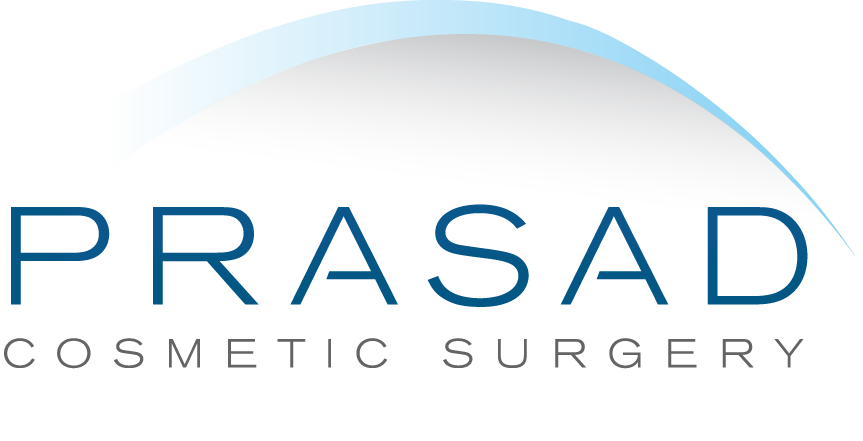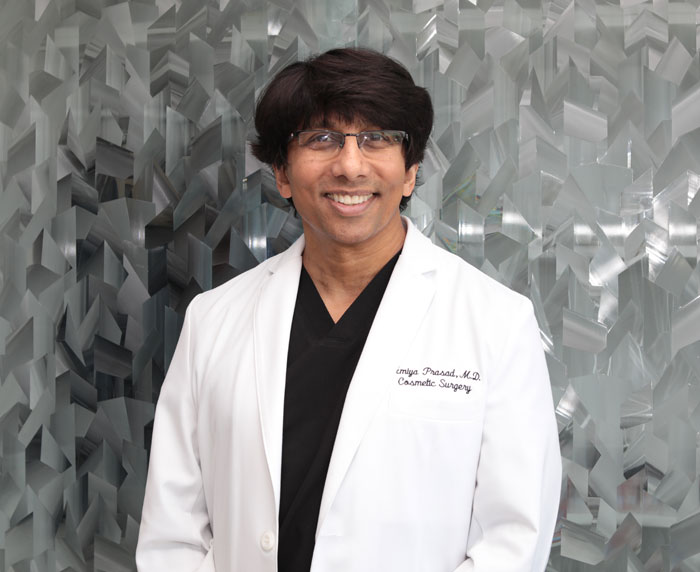Schedule Your Consultation with Dr. Prasad Here
- Home
- About Dr. Prasad
- Face & Eyes
Eyelifts
- Eyelid Surgery
- Eye lift Before and After Photos
- Asian Eyelid Surgery
- Upper Eyelid Surgery
- Upper Eyelid Hollow / Lower Brow Hollowing
- Under Eye Bag Surgery
- Eyelid Ptosis Surgery
- Transconjunctival Blepharoplasty
- Under Eye Fillers
- Eyelid Surgery Revision Specialist
- Thyroid Eye Disease
- Tear Trough Implants
- Eye Lift Questions and Answers
- Body
- Injectables
- Laser
- Hair Restoration
- Photos
- Hair Restoration Before and After Photos
- Eye lift Before and After Photos
- Upper Blepharoplasty Before and After
- Ptosis Surgery Before And After
- Facelift Before and After Photos
- Lip Enhancement Before and After Photos
- Under Eye Filler Before and After
- Blepharoplasty Before and After
- Lower Blepharoplasty Before and After Photos
- Eyelid Surgery Before and After
- Double Eyelid Surgery Before and After
- Contact Us
- Home
- About Dr. Prasad
- Face & Eyes
Eyelifts
- Eyelid Surgery
- Eye lift Before and After Photos
- Asian Eyelid Surgery
- Upper Eyelid Surgery
- Upper Eyelid Hollow / Lower Brow Hollowing
- Under Eye Bag Surgery
- Eyelid Ptosis Surgery
- Transconjunctival Blepharoplasty
- Under Eye Fillers
- Eyelid Surgery Revision Specialist
- Thyroid Eye Disease
- Tear Trough Implants
- Eye Lift Questions and Answers
- Body
- Injectables
- Laser
- Hair Restoration
- Photos
- Hair Restoration Before and After Photos
- Eye lift Before and After Photos
- Upper Blepharoplasty Before and After
- Ptosis Surgery Before And After
- Facelift Before and After Photos
- Lip Enhancement Before and After Photos
- Under Eye Filler Before and After
- Blepharoplasty Before and After
- Lower Blepharoplasty Before and After Photos
- Eyelid Surgery Before and After
- Double Eyelid Surgery Before and After
- Contact Us
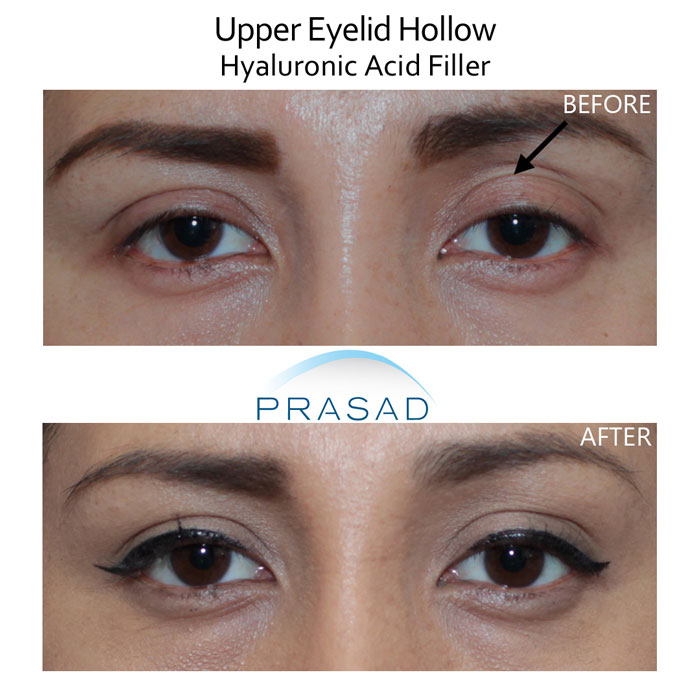
Hollow upper eyelids, which can also be seen as hollowness in the lower brow, can make the eyes look older, or tired. Hollow upper eyelids can also cause the eyelids to look droopy, and mistaken for a more serious condition called eyelid ptosis.

Causes of Upper Eyelid Hollowing
Hollowness in the upper eyelids can have several possible causes, including:
Fat volume loss due to aging
- Genetics
- Previous cosmetic eyelid surgery with excessive fat removal
Facial Volume Loss Due to Aging
Facial volume loss is a major component of aging. As we age, the face loses volume from primarily diminished bone mass, as well as fat, and soft tissue. Facial skin also thins due to aging, which occurs before significant skin laxity or sagging.
The brow bone, which is also called the brow ridge, or medically called the supraorbital ridge or superciliary arch are subject to facial volume loss appearing as hollowing above the upper eyelids. The gradual loss of bone mass due to aging at the brow ridge can make the upper eyelids look hollow.
Facial fat and soft tissue volume behind the skin also decreases with age, including at the lower brow, and above the upper eyelids contributing to hollowness.
Fat volume behind the upper eyelids can also increase with age, but this is a different type of fat from the rest of the face. Fat in the upper and lower eyelids are most often from orbital fat, which is the fat that surrounds, protects, and cushions the eyes. Orbital fat can push forward, called fat prolapse, which can happen as surrounding tissue weakens with aging. Orbital fat is not meant for calorie storage, nor does it provide natural facial volume, so it’s not lost or gained with weight changes. It’s prolapsed orbital fat above the upper eyelid that is reduced with hooded eyelid surgery, or double eyelid surgery in middle aged to older people.
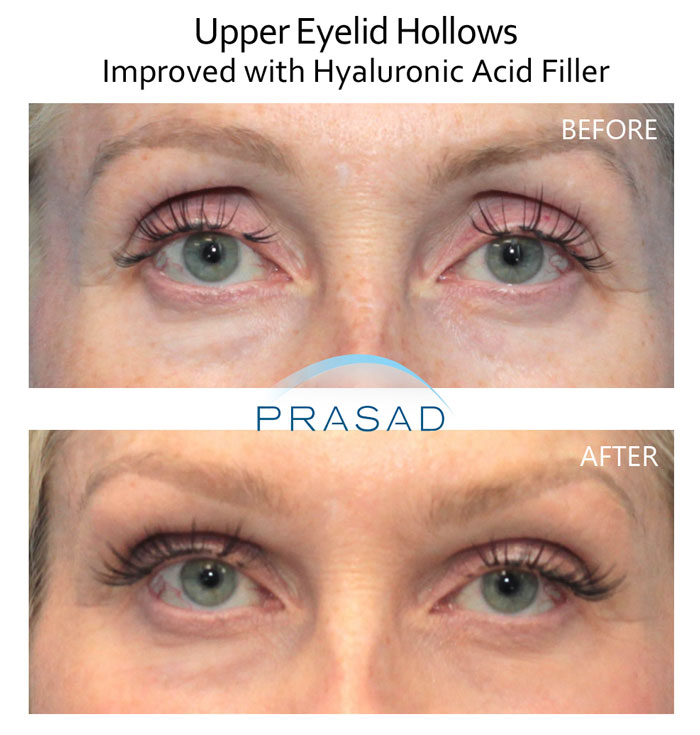
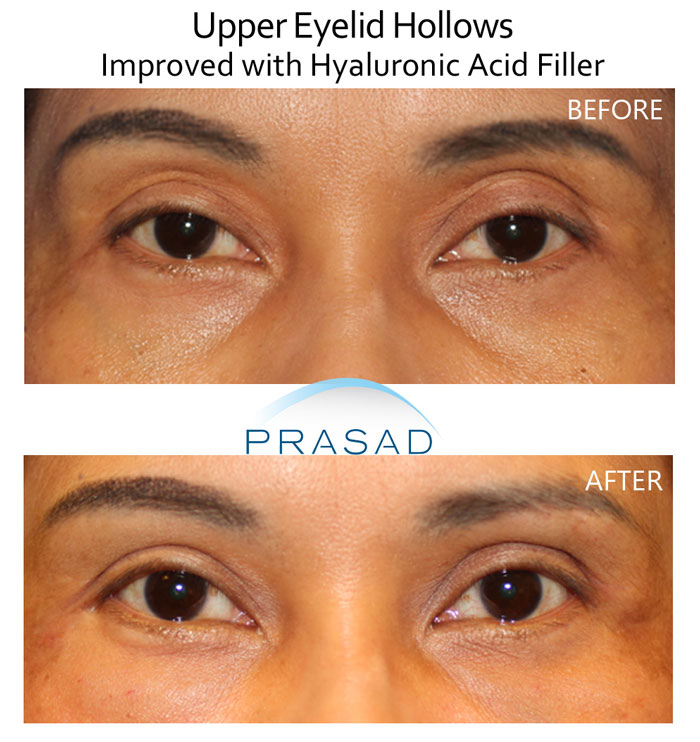
Hollow Upper Eyelids from Previous Eyelid Surgery
As previously stated, orbital fat that has prolapsed behind the upper eyelid is reduced in cosmetic hooded eyelid surgery, or in double eyelid surgery mostly performed in people of Asian descent. Fat behind the upper eyelids can make the eyes look heavy, and tired.
For middle aged to older people of Asian descent, fat behind the upper eyelids can prevent a surgeon from making a skin-to-muscle connection to create a defined eyelid crease, also called a double eyelid. As fat is sculpted from behind the upper eyelids in hooded eyelid surgery, and in double eyelid surgery, there is a potential for too much fat being removed, causing a hollow appearance.
Treatments for Upper Eyelid Hollowing
- Fat Grafting
- CosmeticFiller/ Hyaluronic Acid Filler
Expectations of Fat Grafting
Unlike thin lower eyelid skin (0.5mm thick) that can show the inconsistent and lumpy texture of grafted fat, the skin above the upper eyelids/ lower brow is thicker, so fat grafting is an option. Fat grafting is a surgical procedure which actually involves two surgeries: one to harvest the fat from an area such as the abdomen (belly) and then the placement of grafted fat in the treatment area.
30-70% of grafted fat is absorbed by the body soon after the procedure, as grafted fat needs to take to a blood supply for its volume to remain viable. Since so much grafted fat doesn’t take to a blood supply, at least two fat grafting procedures are needed.
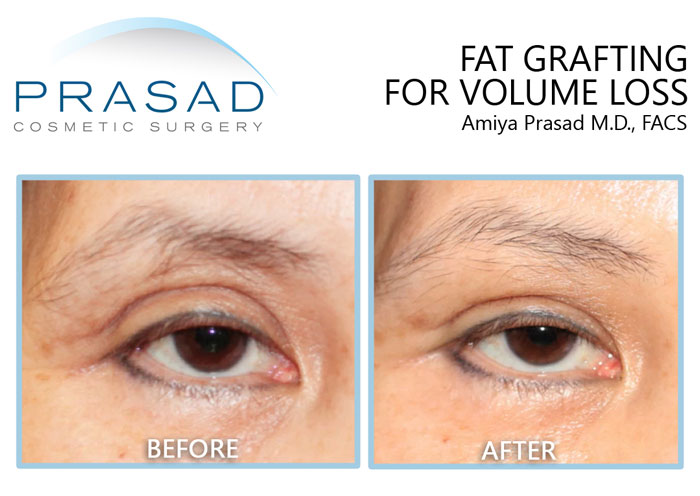
Grafted fat is an unpredictable material because of its texture, and reliance on a new blood supply. Once fat is removed from its original blood supply, its texture can be lumpy, and shape varies when taking to a new blood supply. The thicker skin above the upper eyelid, and the lower brow can better hide the lumpy texture better than lower eyelid skin that is only 0.5mm thick, but the irregular shape is something to keep in mind when considering fat grafting.
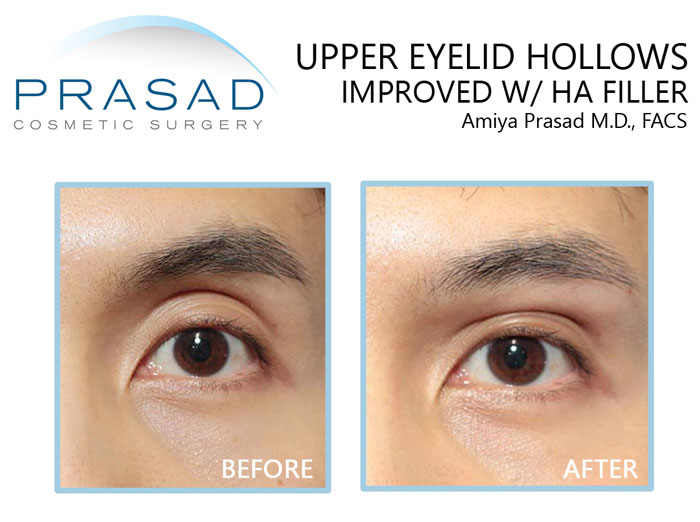
Expectations of Hyaluronic Acid Filler
Hyaluronic acid filler has two clear advantages over fat grafting: it doesn’t require surgery, and it doesn’t require a blood supply.
Hyaluronic acid filler administered into the upper eyelid/lower brow area can be done in minutes as it’s an injectable treatment. The doctor’s experience in injecting filler behind the upper eyelid is important for both safety, and ensuring the filler material is stable, and not lost behind the eyeball.
Not all doctors are comfortable or experienced in performing injection procedures near the eyes. Patients can actually return to work right after the procedure, and many patients have this done over their lunch hour.
Hyaluronic acid does not require a blood supply for volume to be viable, or sustained, making it a much more predictable procedure. The shape of hyaluronic acid fillers can be customized by the doctor administering it.
Hyaluronic acid naturally exists in the body, namely in the skin to retain moisture, and the joints to lubricate movement, so it’s biocompatible, and hypoallergenic.
Hyaluronic acid filler treatment is easily enhanced, or reversible, without the need for surgery. If additional volume is needed for best results, filler can be added. If too much filler volume was placed, the material can be dissolved with the injectable enzyme hyaluronidase, without the need for surgery. Filler treatment can be done again a few days after the previous material was dissolved. Hyaluronidase is also naturally present in the body for the constant turnover of native hyaluronic acid, so it is also a safe material in the right hands.
Hollow Upper Eyelid Appearing Like Drooping (Eyelid Ptosis)
A volume deficiency in the upper eyelids can appear like a drooping eyelid, which is called eyelid ptosis. Eyelid ptosis is a more severe condition as it is caused by detached, stretched, or defective muscle that lifts the upper eyelid called the levator muscle. If the appearance of drooping is caused by hollowness, then only a non-surgical volume treatment like an injectable filler is needed to treat the drooping appearance.
If the appearance of a drooping eyelid is caused by eyelid ptosis, Dr. Prasad can confirm it by performing a ptosis examination.
Eyelid ptosis is not treated by general plastic, or cosmetic surgeons, but it can be diagnosed, and treated by specialist oculoplastic/ oculofacial plastic surgeons (eyelid specialists) like Dr. Prasad who are also trained ophthalmologists (eye surgeons).
Have Upper Eyelid Hollowing Treated Quickly, and Safely
As an eyelid expert, Dr. Prasad can treat upper eyelid hollowing quickly for his busy patients, while maintaining the utmost standards of safety. Dr. Prasad believes that injectable treatments should be approached with the same care as surgical procedures. It only takes minutes to enjoy the appearance of fuller, brighter looking eyes.
To schedule an appointment to address upper eyelid/ lower brow hollowing, you can fill up the contact form below, and we’ll get back to you. You can also contact our offices at (212) 265-8877 in New York City, (516) 742-4636 in Garden City, Long Island, or (703) 356-1336 / (703) 821-2683 in Vienna, Virginia.
